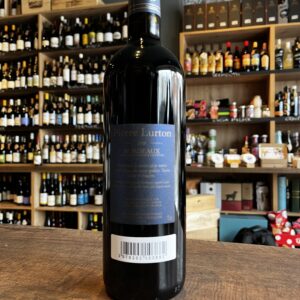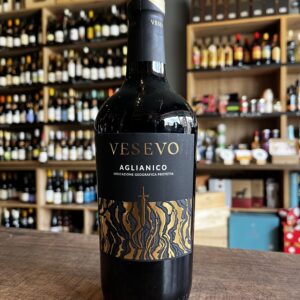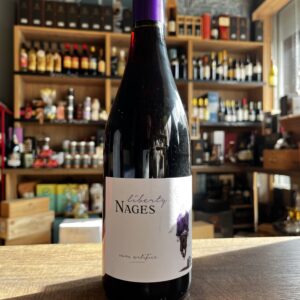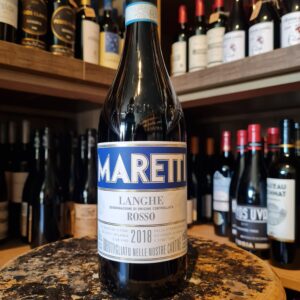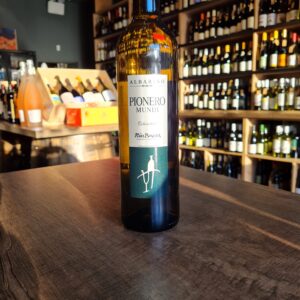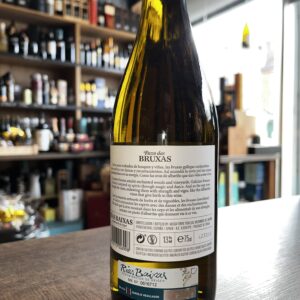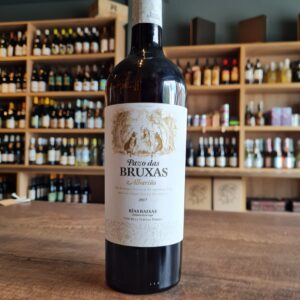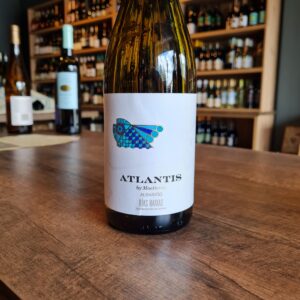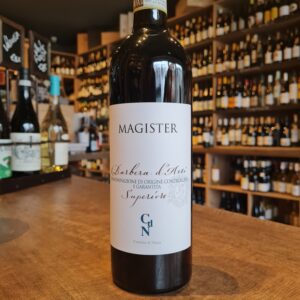-
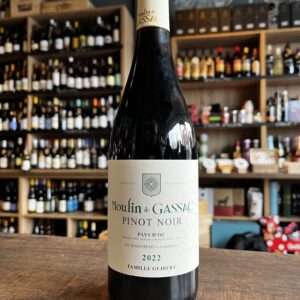 One of the wine films that has had the greatest impact on the industry is undoubtedly Jonathan Nossiter's “Mondovino”. This film was presented at the Cannes Film Festival in 2004, and essentially reflects the conflict between those who understand wine production as a basic artisan work that is completely connected to the land, and those who see it as a corporate business. One of the interviewees featured in the documentary is Aimé Guibert. Creator and champion of the renowned Mas Daumas Gassac, it is thanks to his obsession of giving absolute prominence to the vineyard that he manages to extol the quality of the wines of Languedoc, a region historically known for producing low quality table wines. So when Robert Mondavi, a wine magnate, became interested in this still under used region, Aimé fought with all his might until Mondavi withdrew from his venture. Now, it is his children who continue to protect this legacy with the same passion. A legacy based not so much on the category of the wine as on its quality. Although these wines only carry the vin de pays de l'Oc label, they are considered by great wine specialists to be the “Lafite Rothschilds” of Languedoc-Roussillon.
One of the wine films that has had the greatest impact on the industry is undoubtedly Jonathan Nossiter's “Mondovino”. This film was presented at the Cannes Film Festival in 2004, and essentially reflects the conflict between those who understand wine production as a basic artisan work that is completely connected to the land, and those who see it as a corporate business. One of the interviewees featured in the documentary is Aimé Guibert. Creator and champion of the renowned Mas Daumas Gassac, it is thanks to his obsession of giving absolute prominence to the vineyard that he manages to extol the quality of the wines of Languedoc, a region historically known for producing low quality table wines. So when Robert Mondavi, a wine magnate, became interested in this still under used region, Aimé fought with all his might until Mondavi withdrew from his venture. Now, it is his children who continue to protect this legacy with the same passion. A legacy based not so much on the category of the wine as on its quality. Although these wines only carry the vin de pays de l'Oc label, they are considered by great wine specialists to be the “Lafite Rothschilds” of Languedoc-Roussillon. -
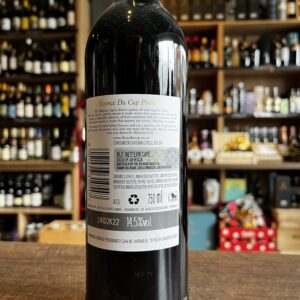
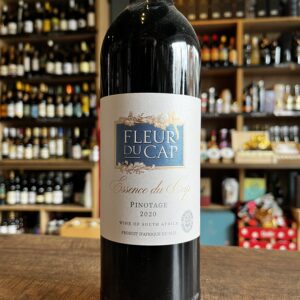 The Fleur du Cap approach is unconstrained. Using only meticulously selected grapes from the finest vineyards across the Cape Winelands, the winery produces a range of wines that offer diversity of choice and diversity of taste. Essence du Cap is known for exceptional quality and wines that express their true varietal character. The grapes were selected from four different vineyard blocks situated around the Bottelary Hills, which were planted in 1987, 1994, 1996 and 1997. Two of the vineyards are bush vines and the remaining trellised. The soils consist of deep decomposed shale (bush vines) and granite (trellised vines), with good water retention. Yields for the bush vines were 6 to 8 t/ha and the trellised vineyards 10 to 12 t/ha. Supplementary irrigation was given during the latter stages of the season to ensure full ripening. Pest and disease control is implemented according to South African subjective IPW standards. This wine is an ideal accompaniment to grilled lamb and poultry, pork roasts and game fish. It is perfect with classic Cape cuisine like Bobotie and Malay Curries, as well as spicy Mexican food.
The Fleur du Cap approach is unconstrained. Using only meticulously selected grapes from the finest vineyards across the Cape Winelands, the winery produces a range of wines that offer diversity of choice and diversity of taste. Essence du Cap is known for exceptional quality and wines that express their true varietal character. The grapes were selected from four different vineyard blocks situated around the Bottelary Hills, which were planted in 1987, 1994, 1996 and 1997. Two of the vineyards are bush vines and the remaining trellised. The soils consist of deep decomposed shale (bush vines) and granite (trellised vines), with good water retention. Yields for the bush vines were 6 to 8 t/ha and the trellised vineyards 10 to 12 t/ha. Supplementary irrigation was given during the latter stages of the season to ensure full ripening. Pest and disease control is implemented according to South African subjective IPW standards. This wine is an ideal accompaniment to grilled lamb and poultry, pork roasts and game fish. It is perfect with classic Cape cuisine like Bobotie and Malay Curries, as well as spicy Mexican food. -
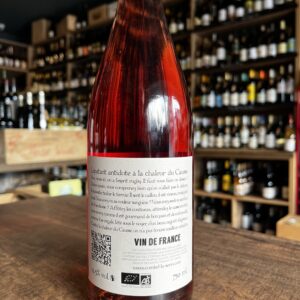
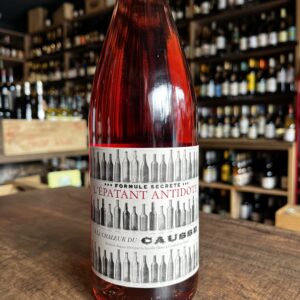 Combel La Serre has been certified organic since 2013, though farmed without chemicals for several decades up to that point. 100% Malbec (known in Cahors as Auxerrois). The vines are 40 years old, grown on clay and limestone soils at an elevation of 320m. Fermentation and aging take place in small tanks."The Splendid Antidote to the Heat of the Causse" is the amusing and appropriate name of this refreshing rosé. (The Causse is the high limestone plateau around Cahors, which gets brutally hot in the summer.) The wine shows a pretty pink/orange color and aromas of ripe cherry, raspberry and cassis with citrus and spice. There are creamy cassis, raspberry and citrus flavors on the palate which shows lovely ripeness and density, with hints of orange peel, earth, smoke and brown spice that continue in the long finish. This is quite delicious and a great value - as are all the wines from Jean-Pierre and Julien Ilbert at Combel-la-Serre. Great Value
Combel La Serre has been certified organic since 2013, though farmed without chemicals for several decades up to that point. 100% Malbec (known in Cahors as Auxerrois). The vines are 40 years old, grown on clay and limestone soils at an elevation of 320m. Fermentation and aging take place in small tanks."The Splendid Antidote to the Heat of the Causse" is the amusing and appropriate name of this refreshing rosé. (The Causse is the high limestone plateau around Cahors, which gets brutally hot in the summer.) The wine shows a pretty pink/orange color and aromas of ripe cherry, raspberry and cassis with citrus and spice. There are creamy cassis, raspberry and citrus flavors on the palate which shows lovely ripeness and density, with hints of orange peel, earth, smoke and brown spice that continue in the long finish. This is quite delicious and a great value - as are all the wines from Jean-Pierre and Julien Ilbert at Combel-la-Serre. Great Value -
Out of stock
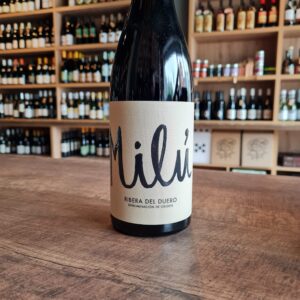 A rich and satisfying Ribera del Duero red, from a quality focussed micro producer Quinta Milú. This is a family run project in the Ribera del Duero from the Asturian viticulturist Germán R. Blanco. A small project which for nearly 10 years now has looked for wines which tell us about where they were born, a small village by the name of La Aguilera situated in the province of Burgos. Germán makes his elegant, fruit-forward wines using foot-treading, wild yeast fermentation and minimal handling. Not filtered, not clarified and not stabilized is his ethos. All his wines share a delicious rusticity, purity of fruit, and incredible freshness. Germán calls this— his flagship wine— a “vino de pueblo”, which translates as “a wine for every day and for everyone.” Pair it with braised meats, steak, game, lamb, root veggies, hard cheese or just have it on its own.
A rich and satisfying Ribera del Duero red, from a quality focussed micro producer Quinta Milú. This is a family run project in the Ribera del Duero from the Asturian viticulturist Germán R. Blanco. A small project which for nearly 10 years now has looked for wines which tell us about where they were born, a small village by the name of La Aguilera situated in the province of Burgos. Germán makes his elegant, fruit-forward wines using foot-treading, wild yeast fermentation and minimal handling. Not filtered, not clarified and not stabilized is his ethos. All his wines share a delicious rusticity, purity of fruit, and incredible freshness. Germán calls this— his flagship wine— a “vino de pueblo”, which translates as “a wine for every day and for everyone.” Pair it with braised meats, steak, game, lamb, root veggies, hard cheese or just have it on its own. -
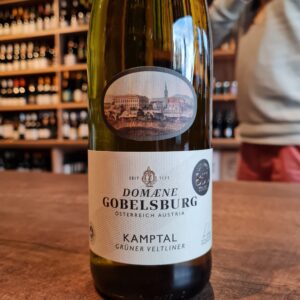 Like every vintage, the Grüner Veltliner Domain Gobelsburg is the benchmark wine in this price range, balanced, juicy and delicate, that's how Veltliner is fun. Delicate spice on the nose with some Boskop apple, Williams pear and herbaceous hints of thyme and mint. On the palate a rather soft texture, gentle fruit with a nice acidic accompaniment, delicately piquant pepper, then some minerality comes through. Again one of the most harmonious entry-level Veltliners of this vintage!
Like every vintage, the Grüner Veltliner Domain Gobelsburg is the benchmark wine in this price range, balanced, juicy and delicate, that's how Veltliner is fun. Delicate spice on the nose with some Boskop apple, Williams pear and herbaceous hints of thyme and mint. On the palate a rather soft texture, gentle fruit with a nice acidic accompaniment, delicately piquant pepper, then some minerality comes through. Again one of the most harmonious entry-level Veltliners of this vintage! -
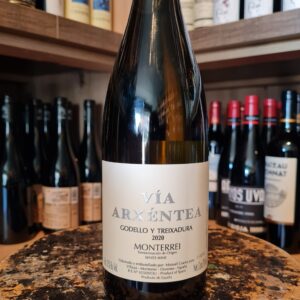 DO Monterrei is the smallest of the Galician DOs and the most recent, having been created in 1996. It is an emerging region located in the province of Ourense in the south-east of Galicia, on the border with Portugal. The Atlantic influence here is not as strong and the climate is hotter and more continental than the rest of Galicia, making it possible to produce impressive whites from Treixadura and Godello as well as reds from autochtonous Mencia. Most of the vineyards are located on the slopes lining the River Támega where the soil has a deep red colour with a high clay content. After spending many years working for other wineries in the area around Galicia, Manuel Guerra Justo decided to break away and set up his own adega, “Via Arxentea”, literally translated as “ The Silver Route”, the local name for the important pilgrimage route of El Camino de Santiago to Santiago de Compostela. Manuel Guerra is a “Colleitero” and therefore responsible for the entire production cycle, from the care in the vineyard to the winemaking. He is the first to acknowledge that the secret to achieving purity and varietal expression in his wines is in his vineyard management which he attends to personally and pampers vine by vine as if they were his own children, with the sole objective of achieving maximum quality. Under the consultancy of well known winemaker, Alvaro Bueno, Manuel Guerra Justo owns four hectares around Verin, planted almost equally between Godello and Treixadura and a small batch of Mencia. Vía Arxentea wine are made from estate bottled fruit, harvested by hand and fermented using indigenous yeasts.
DO Monterrei is the smallest of the Galician DOs and the most recent, having been created in 1996. It is an emerging region located in the province of Ourense in the south-east of Galicia, on the border with Portugal. The Atlantic influence here is not as strong and the climate is hotter and more continental than the rest of Galicia, making it possible to produce impressive whites from Treixadura and Godello as well as reds from autochtonous Mencia. Most of the vineyards are located on the slopes lining the River Támega where the soil has a deep red colour with a high clay content. After spending many years working for other wineries in the area around Galicia, Manuel Guerra Justo decided to break away and set up his own adega, “Via Arxentea”, literally translated as “ The Silver Route”, the local name for the important pilgrimage route of El Camino de Santiago to Santiago de Compostela. Manuel Guerra is a “Colleitero” and therefore responsible for the entire production cycle, from the care in the vineyard to the winemaking. He is the first to acknowledge that the secret to achieving purity and varietal expression in his wines is in his vineyard management which he attends to personally and pampers vine by vine as if they were his own children, with the sole objective of achieving maximum quality. Under the consultancy of well known winemaker, Alvaro Bueno, Manuel Guerra Justo owns four hectares around Verin, planted almost equally between Godello and Treixadura and a small batch of Mencia. Vía Arxentea wine are made from estate bottled fruit, harvested by hand and fermented using indigenous yeasts. -
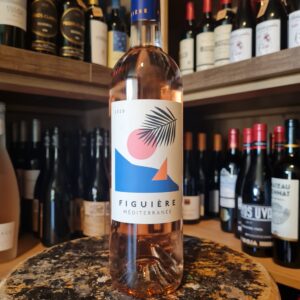 Here is a Provençal estate rosé sure to add some style to your summer! One smell, one sip and you get beamed to the Mediterranean Sea! This delicious Rosé is created by a pioneering Provence domaine of excellence. The family Combard is one of the ambassadors of a new generation of prestigious winemakers. You can smell notes of white flowers that then develop into white peach aromas. The palate expresses the velvety texture of citrus peel and the zestiness of an essential oil. Citrus profile with this wine that is astringent, green, tight and fresh.
Here is a Provençal estate rosé sure to add some style to your summer! One smell, one sip and you get beamed to the Mediterranean Sea! This delicious Rosé is created by a pioneering Provence domaine of excellence. The family Combard is one of the ambassadors of a new generation of prestigious winemakers. You can smell notes of white flowers that then develop into white peach aromas. The palate expresses the velvety texture of citrus peel and the zestiness of an essential oil. Citrus profile with this wine that is astringent, green, tight and fresh. -
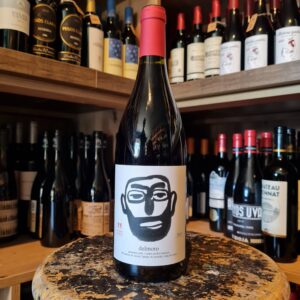 La Comarcal del Moro is part of a collaboration of two friends, Javi Revert and Victor Marqués, who first worked together at Celler del Roure. This wine comes from terroir specific vineyards to express the very best of the varieties they work with. Delmoro is predominantly Garnacha with some Bobal and Syrah in the blend, fermented separately, and aged in stainless steel and oak. All coming from a four hectare single vineyard. Rustic, but seductive, young but with some great lenght and complexity, this wine is not to be underestimated. Goes beautifully with poultry, pork and salmon.
La Comarcal del Moro is part of a collaboration of two friends, Javi Revert and Victor Marqués, who first worked together at Celler del Roure. This wine comes from terroir specific vineyards to express the very best of the varieties they work with. Delmoro is predominantly Garnacha with some Bobal and Syrah in the blend, fermented separately, and aged in stainless steel and oak. All coming from a four hectare single vineyard. Rustic, but seductive, young but with some great lenght and complexity, this wine is not to be underestimated. Goes beautifully with poultry, pork and salmon. -
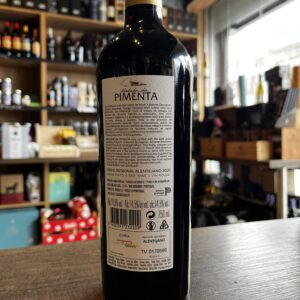
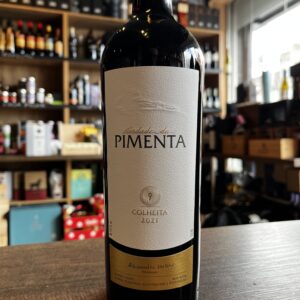 Casa Relvas is a family-owned winery that was born out of a desire to give continuity to the family history associated with the land for five generations. The project began in 1997, Alexandre Relvas, who learned about his extensive family roots in the estate "Herdade De Sao Miguel" in Alentejo. In 2001, the first 10 hectares of vineyards were planted. Next year, Nuno Franco, a consultant in viticulture and enology, joins the project, he continues to plant another 25 hectares of vineyards. In 2003, a new winery was built on the estate with the possibility of vinification of 500 tons of grapes. It was headed by winemaker Fernanda Gomes. The following year, the first wine of the farm was launched on the market. By 2010, wine sales doubled to 1 million bottles. The following year, the company acquired the estate "Herdade da Pimenta" with 65 hectares of vineyards and a winery that can process 2.5 tons of grapes. Since 2016, the company also began to grow olive trees. The mission of Casa Relvas is to produce quality wines that accompany every moment of life, wines that can bring special pleasure from food, celebration, meeting with friends and beautify the memories of bright moments of life. This wine accompanies red meats, roast beef and grilled meats.
Casa Relvas is a family-owned winery that was born out of a desire to give continuity to the family history associated with the land for five generations. The project began in 1997, Alexandre Relvas, who learned about his extensive family roots in the estate "Herdade De Sao Miguel" in Alentejo. In 2001, the first 10 hectares of vineyards were planted. Next year, Nuno Franco, a consultant in viticulture and enology, joins the project, he continues to plant another 25 hectares of vineyards. In 2003, a new winery was built on the estate with the possibility of vinification of 500 tons of grapes. It was headed by winemaker Fernanda Gomes. The following year, the first wine of the farm was launched on the market. By 2010, wine sales doubled to 1 million bottles. The following year, the company acquired the estate "Herdade da Pimenta" with 65 hectares of vineyards and a winery that can process 2.5 tons of grapes. Since 2016, the company also began to grow olive trees. The mission of Casa Relvas is to produce quality wines that accompany every moment of life, wines that can bring special pleasure from food, celebration, meeting with friends and beautify the memories of bright moments of life. This wine accompanies red meats, roast beef and grilled meats. -
Out of stock
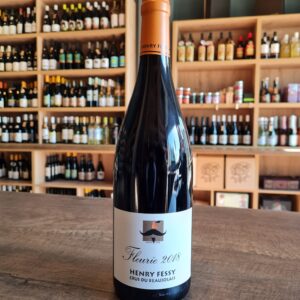 Lying on homogeneous soils of pink granite containing large crystals, Fleurie is often regarded as the ''Queen of Beaujolais'' with their vines averaging 50 years old. The wines are characterized by great finesse and elegance with floral aromas of irises and violets. An elegant and delicate wine. Lovely paired with roasted chicken, grilled meats and semi-cured cheeses
Lying on homogeneous soils of pink granite containing large crystals, Fleurie is often regarded as the ''Queen of Beaujolais'' with their vines averaging 50 years old. The wines are characterized by great finesse and elegance with floral aromas of irises and violets. An elegant and delicate wine. Lovely paired with roasted chicken, grilled meats and semi-cured cheeses -
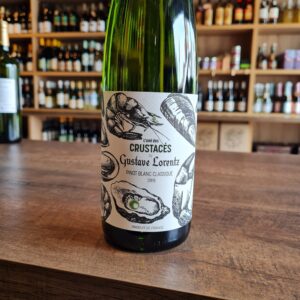 Produced by Gustave Lorentz, L'ami Des Crustacés 2018 is a well-priced Pinot Blanc from the Alsace Wine Region. Fresh and zesty on the nose with spiced pear and citrus aromas. Dry and crisp on the palate with white florals, spiced pear, ripe apple and peachy and citrus flavours. Finishes with a crisp, clean minerality. Great acidity for food. Chill and pair it with a pork schnitzel or breaded veal cutlets with a squeeze of lemon juice. Pork loin or grilled chicken, and as the name suggests any shelffish will match with it.
Produced by Gustave Lorentz, L'ami Des Crustacés 2018 is a well-priced Pinot Blanc from the Alsace Wine Region. Fresh and zesty on the nose with spiced pear and citrus aromas. Dry and crisp on the palate with white florals, spiced pear, ripe apple and peachy and citrus flavours. Finishes with a crisp, clean minerality. Great acidity for food. Chill and pair it with a pork schnitzel or breaded veal cutlets with a squeeze of lemon juice. Pork loin or grilled chicken, and as the name suggests any shelffish will match with it. -
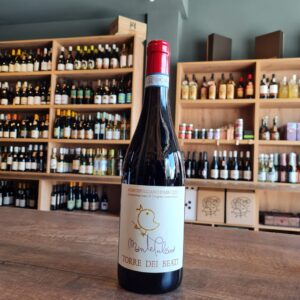 Some of you may have been lucky enough to visit Italy and have seen the amazing art and the cities and villages steeped in history. Italy is, and will always be that kind of destination where everything is out of this world. The art, the cities, the food (OMG, the food) and last but by all means not least, the wine!!! Yes of course we all have had a few Italian wines that weren't up to scratch, but generally they are hard to find unless you don't read the labels or you are really at a loss with them. As per anything Italians do, their culture and often their wine are connected to their history and the Italians take great pride in this (rightfully so). Torre dei beati is a pure example of that, as it translates as “Tower of the Blessed”, and takes its lead from a section of the large 14th century fresco adorning the church of Santa Maria in Piano at the base of the town’s hillside. The fresco features an interpretation of the Judgement Day, where a tower is the final goal for souls who have reached the after-life. And so it came to pass that the team at Torre dei Beati imagined this mythical tower to symbolise all that they aim to achieve in their efforts to create a wine typical of its locale and honestly made: though the journey may be tough and at first seemingly impossible, the end more than justified the means. The winery is owned and run by husband-and-wife team Adrianna Galasso and Fausto Albanesi. Fausto’s father-in-law, Rocco, planted the first Torre dei Beati vineyard in 1972 and handed over control in 1999 to the young couple who quickly converted the estate to organic farming in 2000, long before it became the hip thing to do. Although you can find in every Irish Restaurant Montepulciano(Grape) d'Abruzzo(The Region), most of these wines are somewhat of inferior quality due to the majority of the local winemakers focusing on quantity rather than quality. Here is quite opposite, with only the best bunches are hand-picked from the Loreto Aprutino vineyard to make this elegant Montepulciano. The wine is aged for 12 months, half in 3000l Slovenian oak casks, half in second-use French oak barriques. Showing complex fruit, lightly touched by spicy oak. Full bodied yet smooth; the finely balanced tannins work well with natural minerality and measured acidity for a lingering finish.
Some of you may have been lucky enough to visit Italy and have seen the amazing art and the cities and villages steeped in history. Italy is, and will always be that kind of destination where everything is out of this world. The art, the cities, the food (OMG, the food) and last but by all means not least, the wine!!! Yes of course we all have had a few Italian wines that weren't up to scratch, but generally they are hard to find unless you don't read the labels or you are really at a loss with them. As per anything Italians do, their culture and often their wine are connected to their history and the Italians take great pride in this (rightfully so). Torre dei beati is a pure example of that, as it translates as “Tower of the Blessed”, and takes its lead from a section of the large 14th century fresco adorning the church of Santa Maria in Piano at the base of the town’s hillside. The fresco features an interpretation of the Judgement Day, where a tower is the final goal for souls who have reached the after-life. And so it came to pass that the team at Torre dei Beati imagined this mythical tower to symbolise all that they aim to achieve in their efforts to create a wine typical of its locale and honestly made: though the journey may be tough and at first seemingly impossible, the end more than justified the means. The winery is owned and run by husband-and-wife team Adrianna Galasso and Fausto Albanesi. Fausto’s father-in-law, Rocco, planted the first Torre dei Beati vineyard in 1972 and handed over control in 1999 to the young couple who quickly converted the estate to organic farming in 2000, long before it became the hip thing to do. Although you can find in every Irish Restaurant Montepulciano(Grape) d'Abruzzo(The Region), most of these wines are somewhat of inferior quality due to the majority of the local winemakers focusing on quantity rather than quality. Here is quite opposite, with only the best bunches are hand-picked from the Loreto Aprutino vineyard to make this elegant Montepulciano. The wine is aged for 12 months, half in 3000l Slovenian oak casks, half in second-use French oak barriques. Showing complex fruit, lightly touched by spicy oak. Full bodied yet smooth; the finely balanced tannins work well with natural minerality and measured acidity for a lingering finish. -
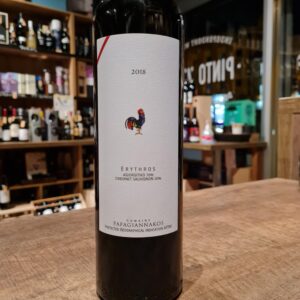 Founded in 1919, Domaine Papagiannakos is located in the Attica region of Central Greece, just 18 miles from Athens. Today, the winery is run by the 3rd generation, Vassilis Papagiannakos, who has issued a new era of modern winemaking while still maintaining the family’s dedication to cultivating and preserving the region’s most famous indigenous grape, Savatiano( We have this one in stock too!). The winery produces a small amount of red wine, showcasing both the indigenous Agioritiko as well as international varietals such Cabernet Sauvignon in this case. Agiorgitiko is a historical variety with a great genetic variation. The vineyards used for the Papagiannakos Erythros are located in southeastern Attica at an altitude of 360 feet. The vineyard is relatively young, with an average of 20-years-old, and has a north-facing exposure. The vineyard is farmed without irrigation, resulting in low-yielding vines that produce grapes with rich, concentrated fruit flavours. The structure of this red wine makes it an ideal pairing for a variety of red meat dishes, as well as hard cheeses.
Founded in 1919, Domaine Papagiannakos is located in the Attica region of Central Greece, just 18 miles from Athens. Today, the winery is run by the 3rd generation, Vassilis Papagiannakos, who has issued a new era of modern winemaking while still maintaining the family’s dedication to cultivating and preserving the region’s most famous indigenous grape, Savatiano( We have this one in stock too!). The winery produces a small amount of red wine, showcasing both the indigenous Agioritiko as well as international varietals such Cabernet Sauvignon in this case. Agiorgitiko is a historical variety with a great genetic variation. The vineyards used for the Papagiannakos Erythros are located in southeastern Attica at an altitude of 360 feet. The vineyard is relatively young, with an average of 20-years-old, and has a north-facing exposure. The vineyard is farmed without irrigation, resulting in low-yielding vines that produce grapes with rich, concentrated fruit flavours. The structure of this red wine makes it an ideal pairing for a variety of red meat dishes, as well as hard cheeses. -
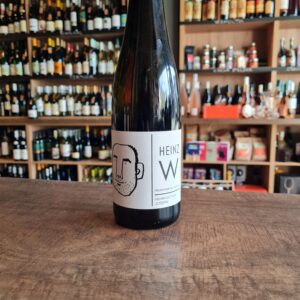 Grüner Veltliner is Austria's most famous grape variety and is considered Austria's national grape variety. The best Grüner Veltliner wines come from the northeast of the country, especially regions such as the Wachau, Kamptal and Kremstal bordering the Danube River. This wine made by Weingut Weixelbaum the winery of Heinz and Gabi Weixelbaum. Located in the village of Strasser in the Austrian Kamptal. It is a medium sized, typical Austrian winery. A family business that is passed on from generation to generation. Heinz Weixelbaum has very good vineyards on soils of 'urgestein' and 'loess', Heinz also dares to prune a lot in the spring, so that his wines are more powerful than most from the region. The Weixelbaum family only makes wine from grapes from its own 22 hectares of vineyards. Everything is done by hand and the cellar is full of the most modern equipment. The vineyards in the Kamptal owe their name to the river Kamp that flows through the area. It is one of the most prestigious Austrian wine districts. In this wine-growing region, which is part of the federal state of Lower Austria, warm and sunny summer days ensure optimal ripening of the grapes. In addition, a cooling breeze during the night guarantees flawless aromas and refined acids in the wines. The vineyards are mainly terraced along the steep banks of the river. The soil consists largely of loess, loam, gravel, sandstone and shale. Because the roots of the vines can reach up to six meters deep, the wines get a different character on every surface.
Grüner Veltliner is Austria's most famous grape variety and is considered Austria's national grape variety. The best Grüner Veltliner wines come from the northeast of the country, especially regions such as the Wachau, Kamptal and Kremstal bordering the Danube River. This wine made by Weingut Weixelbaum the winery of Heinz and Gabi Weixelbaum. Located in the village of Strasser in the Austrian Kamptal. It is a medium sized, typical Austrian winery. A family business that is passed on from generation to generation. Heinz Weixelbaum has very good vineyards on soils of 'urgestein' and 'loess', Heinz also dares to prune a lot in the spring, so that his wines are more powerful than most from the region. The Weixelbaum family only makes wine from grapes from its own 22 hectares of vineyards. Everything is done by hand and the cellar is full of the most modern equipment. The vineyards in the Kamptal owe their name to the river Kamp that flows through the area. It is one of the most prestigious Austrian wine districts. In this wine-growing region, which is part of the federal state of Lower Austria, warm and sunny summer days ensure optimal ripening of the grapes. In addition, a cooling breeze during the night guarantees flawless aromas and refined acids in the wines. The vineyards are mainly terraced along the steep banks of the river. The soil consists largely of loess, loam, gravel, sandstone and shale. Because the roots of the vines can reach up to six meters deep, the wines get a different character on every surface. -
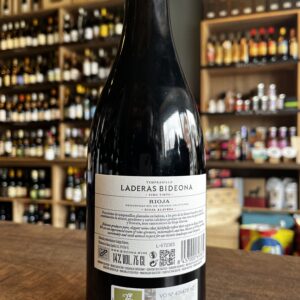
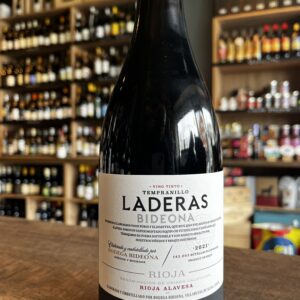 Badiola is a winery in the heart of Rioja Alavesa. Founded in 2018 by acquiring an existing winery, Badiola offers village and single vieyard wines that display the freshness, elegance and depth of flavours which distinguish the great wines from this part of Rioja. Badiola cultivates over 300 parcels of extraordinary vineyards on the slopes of the Sierra Cantabria, mainly in the villages of villabuena de Alava, Leza, Samaniego, Laguardia, Navaridas and Banos de Ebro. Averag age of the vines are 50 years old which means that fruit is of outstanding quality and well the vine is well inserted into the soil and not as prone to climatic issues that may arise. This wine is made from high quality, low yelding grapes from hillside(Laderas) vines on limestones soils, without the need for carbonic maceration to mask unripe or unhealthy fruit. About a quarter of the wine is aged from 4 to 6 months in new barriques of top quality French and American Oak, for added complexity and texture, but not overt oak character. A versatile and very satisfying drinking wine and a great example of cooler climate Tempranillo from Rioja Alavesa. A good match with both meat and fish-based tapas, mezze, rice dishes and pasta.
Badiola is a winery in the heart of Rioja Alavesa. Founded in 2018 by acquiring an existing winery, Badiola offers village and single vieyard wines that display the freshness, elegance and depth of flavours which distinguish the great wines from this part of Rioja. Badiola cultivates over 300 parcels of extraordinary vineyards on the slopes of the Sierra Cantabria, mainly in the villages of villabuena de Alava, Leza, Samaniego, Laguardia, Navaridas and Banos de Ebro. Averag age of the vines are 50 years old which means that fruit is of outstanding quality and well the vine is well inserted into the soil and not as prone to climatic issues that may arise. This wine is made from high quality, low yelding grapes from hillside(Laderas) vines on limestones soils, without the need for carbonic maceration to mask unripe or unhealthy fruit. About a quarter of the wine is aged from 4 to 6 months in new barriques of top quality French and American Oak, for added complexity and texture, but not overt oak character. A versatile and very satisfying drinking wine and a great example of cooler climate Tempranillo from Rioja Alavesa. A good match with both meat and fish-based tapas, mezze, rice dishes and pasta. -
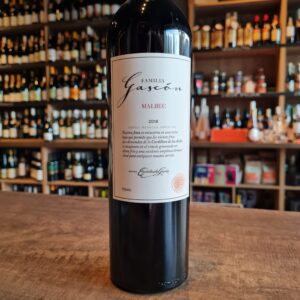 This wine is made with grapes sourced from vineyards located mainly in the Primera Zona. Influenced by the winds descending from the Andes Mountains and its lower altitude, this region is one of the coolest areas in Argentine viticulture and often suffers from late frosts during bud break. These conditions also favor great thermal amplitude. Most of the vineyards are old and traditionally irrigated, with relatively heavy and deep loamy soils. Season 2020 was marked by warmer than usual temperatures and a strong hydric crisis due to very scarce rainfall that delivered lower yields and speeded up the ripening process. These conditions followed by the outbreak of a global pandemic accelerated the harvest. Despite all the uncertainties we were able to reach an optimal ripening point that helped delivered great quality wines. Towards the end of the last century, Mr. Miguel Escorihuela Gascón, a passionate and determined visionary, created one of the most prestigious wine companies in the Republic of Argentina since 1884: Establecimientos Vitivinícolas Escorihuela. From the very beginning, his main objective was to achieve wines of the highest quality. Therefore, special attention was paid to the selection and care of grape varieties, the elaboration under traditional methods and the constant incorporation of technology, with a team of qualified Argentine professionals and the counselling of renowned foreign winemakers and technicians, which makes it possible to maintain a high level of international quality. Thus, the winery developed throughout time, succeeding in placing its products in a privileged place both in the domestic and in the global markets on a constant basis, achieving a high level of customer loyalty, with consumers adopting our wines once and for all. 100% Malbec from the Agrelo region, the wine was matured in French and American oak for 4 months. Today, after 130 years innovating in the preparation of top quality wines, Escorihuela Gascón is the leader in the creation of Premium and High End wines and is one of the 10 most important exporting wineries.
This wine is made with grapes sourced from vineyards located mainly in the Primera Zona. Influenced by the winds descending from the Andes Mountains and its lower altitude, this region is one of the coolest areas in Argentine viticulture and often suffers from late frosts during bud break. These conditions also favor great thermal amplitude. Most of the vineyards are old and traditionally irrigated, with relatively heavy and deep loamy soils. Season 2020 was marked by warmer than usual temperatures and a strong hydric crisis due to very scarce rainfall that delivered lower yields and speeded up the ripening process. These conditions followed by the outbreak of a global pandemic accelerated the harvest. Despite all the uncertainties we were able to reach an optimal ripening point that helped delivered great quality wines. Towards the end of the last century, Mr. Miguel Escorihuela Gascón, a passionate and determined visionary, created one of the most prestigious wine companies in the Republic of Argentina since 1884: Establecimientos Vitivinícolas Escorihuela. From the very beginning, his main objective was to achieve wines of the highest quality. Therefore, special attention was paid to the selection and care of grape varieties, the elaboration under traditional methods and the constant incorporation of technology, with a team of qualified Argentine professionals and the counselling of renowned foreign winemakers and technicians, which makes it possible to maintain a high level of international quality. Thus, the winery developed throughout time, succeeding in placing its products in a privileged place both in the domestic and in the global markets on a constant basis, achieving a high level of customer loyalty, with consumers adopting our wines once and for all. 100% Malbec from the Agrelo region, the wine was matured in French and American oak for 4 months. Today, after 130 years innovating in the preparation of top quality wines, Escorihuela Gascón is the leader in the creation of Premium and High End wines and is one of the 10 most important exporting wineries. -
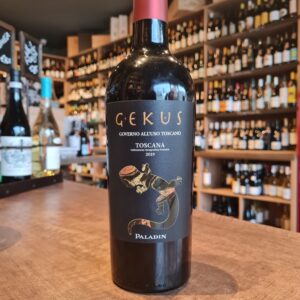 There are many ways in which to fall in love with Tuscany, not the least of which is through the region’s wonderful wines—or its landscape, its people, its food, and its art. Paladin's example of Super Tuscan wines comes in this form. A local take on the classic Bordeaux-style blend of Cabernet Sauvignon, Merlot, and Syrah (and sometimes Cabernet Franc), these wines were developed, in part, as a reaction to the restrictive regulations in Tuscany during the 1970s. At the time they emerged, they were considered some of the region’s best reds. Yet, somewhat ironically, they were technically table wine. In 1994, their Vino da Tavola (VdT) status was elevated to the Indicazione Geografica Tipica (IGT) denomination, which officially endowed these non-traditional wines with a premium quality rating just below the Denominazione di Origine Controllata (DOC), which at that time was reserved for more traditional regional wines. The tonneau used at Paladin hold 2 to 3,000 litters. Very impressive if you compare the barrels with a normal barrique barrel. Even though Gekus is only aged for 3 months, the body that it has is quite pronounced and it is indicative of the extraction done with the grapes. The bottle itself already shows through its weight that we are about to encounter something phenomenal, something heavy, something Super. The palate is complex and you can feel the residual sugar without it being sweet to a point of being unpleasant. Recommended with red meat, it is traditionally very popular with pici (thick spaghetti) with meat sauce. Serve at room temperature.
There are many ways in which to fall in love with Tuscany, not the least of which is through the region’s wonderful wines—or its landscape, its people, its food, and its art. Paladin's example of Super Tuscan wines comes in this form. A local take on the classic Bordeaux-style blend of Cabernet Sauvignon, Merlot, and Syrah (and sometimes Cabernet Franc), these wines were developed, in part, as a reaction to the restrictive regulations in Tuscany during the 1970s. At the time they emerged, they were considered some of the region’s best reds. Yet, somewhat ironically, they were technically table wine. In 1994, their Vino da Tavola (VdT) status was elevated to the Indicazione Geografica Tipica (IGT) denomination, which officially endowed these non-traditional wines with a premium quality rating just below the Denominazione di Origine Controllata (DOC), which at that time was reserved for more traditional regional wines. The tonneau used at Paladin hold 2 to 3,000 litters. Very impressive if you compare the barrels with a normal barrique barrel. Even though Gekus is only aged for 3 months, the body that it has is quite pronounced and it is indicative of the extraction done with the grapes. The bottle itself already shows through its weight that we are about to encounter something phenomenal, something heavy, something Super. The palate is complex and you can feel the residual sugar without it being sweet to a point of being unpleasant. Recommended with red meat, it is traditionally very popular with pici (thick spaghetti) with meat sauce. Serve at room temperature.


